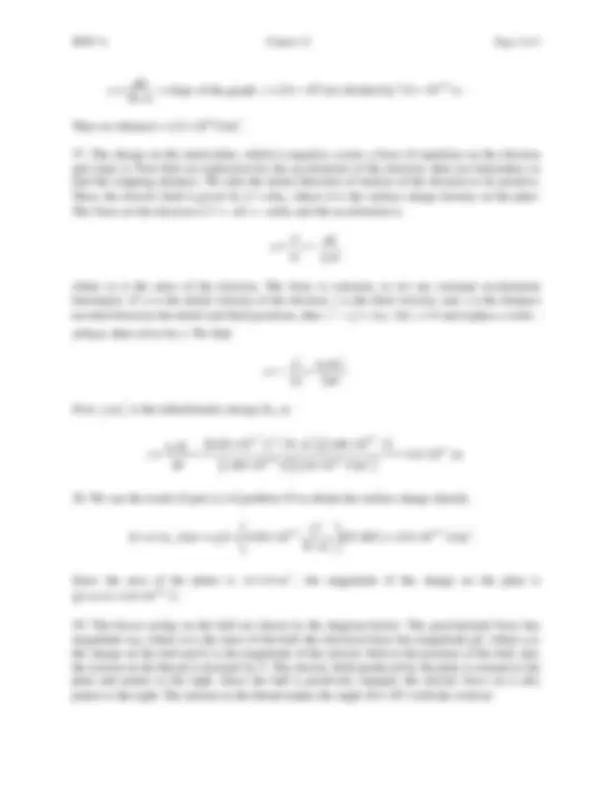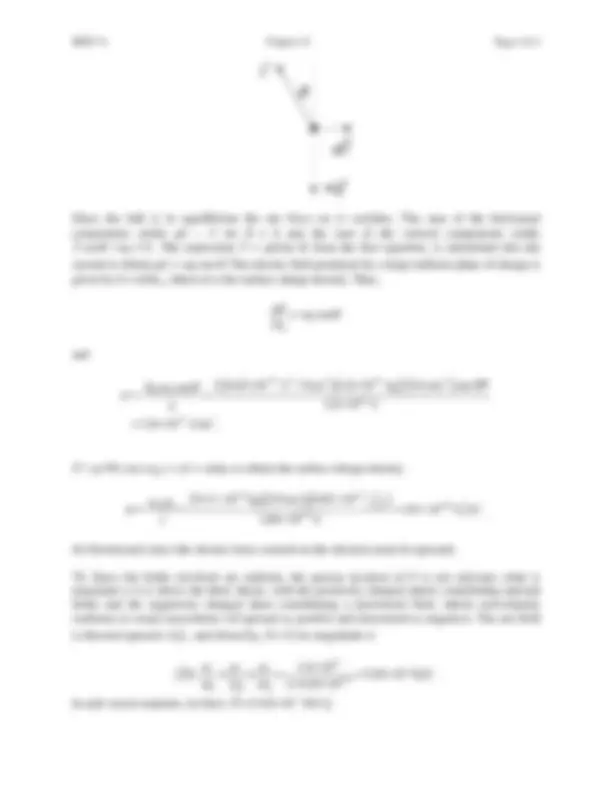




Study with the several resources on Docsity

Earn points by helping other students or get them with a premium plan


Prepare for your exams
Study with the several resources on Docsity

Earn points to download
Earn points by helping other students or get them with a premium plan
Community
Ask the community for help and clear up your study doubts
Discover the best universities in your country according to Docsity users
Free resources
Download our free guides on studying techniques, anxiety management strategies, and thesis advice from Docsity tutors
Material Type: Exam; Class: General Physics II; Subject: Physics; University: La Salle University; Term: Unknown 1989;
Typology: Exams
1 / 4

This page cannot be seen from the preview
Don't miss anything!



( )( )(^ ) 12 2 2 4 6
λ = π = π × −^ ⋅ × = × −
and with Eq. 23-12 (for the field due to a line of charge). In terms of magnitudes, we have (if r = 0.080 m and λ = 6.0 x 10 -6^ C/m)
ma = eE =
e λ 2 πεo r ⇒ a =
e λ 2 πεo r m = 2.1 × 1017 m/s^2.
E net = E 1 + E 2 = λ 1 2 πεo ( x + L/2 )
λ 2 2 πεo ( x − L/2 ) .
Setting this equal to zero and solving for x we find
x = λ 1 − λ (^2) λ 1 + λ (^2)
which, for the values given in the problem, yields x = 8.0 cm.
density for the surface just under the point. The charge is distributed uniformly over both sides of the original plate, with half being on the side near the field point. Thus,
6 4 2 2
4.69 10 C/m. 2 2(0.080 m)
q A
− = = × = × −
The magnitude of the field is
4 2 7 12 2 2
4.69 10 C/m 5.3 10 N/C. 8.85 10 C / N m
− −
The field is normal to the plate and since the charge on the plate is positive, it points away from the plate.
(b) At a point far away from the plate, the electric field is nearly that of a point particle with
where r is the distance from the plate. Thus,
( ) ( ) ( )
9 2 2 6 2
8.99 10 N m / C 6.0 10 C 60 N/C. 30 m
we conclude:
E = (2.00 × 10 −^11 N/C)jˆ.
(b) E = 0;
(a) To the left of the plates:
E = ( σ / 2 ε 0 )( ˆi)
(b) To the right of the plates:
E = ( σ / 2 ε 0 )ˆi
(from the right plate) + (^) ( σ / 2 ε 0 )( − ˆi)(from the left one) = 0.
(c) Between the plates:
( ) (^ )
22 2 11 2 0 0 0 12 2
ˆ ˆ ˆ 7.00^10 C/m ˆ ( i) i ( i) i 7.91 10 N/C i. 2 2 N m 8.85 10 C
− − −
Since the ball is in equilibrium the net force on it vanishes. The sum of the horizontal
0
tan 2
q mg
and
12 2 2 6 2 0 8 9 2
2 tan 2 8.85^10 C / N.m^ 1.0^10 kg^ 9.8 m/s^ tan 30 2.0 10 C 5.0 10 C/m.
mg q
− − − −
σ ε = =
− − −
m g − e
e
C 0
31 12 19
2
.. .
kg 9.8 m s C
N m (^) C m
(b) Downward (since the electric force exerted on the electron must be upward).
is directed upward ( +ˆj), and (from Eq. 23-13) its magnitude is
6 1 2 3 4 12 0 0 0
− −
In unit-vector notation, we have E = (5.65 × 104 N/C) jˆ.